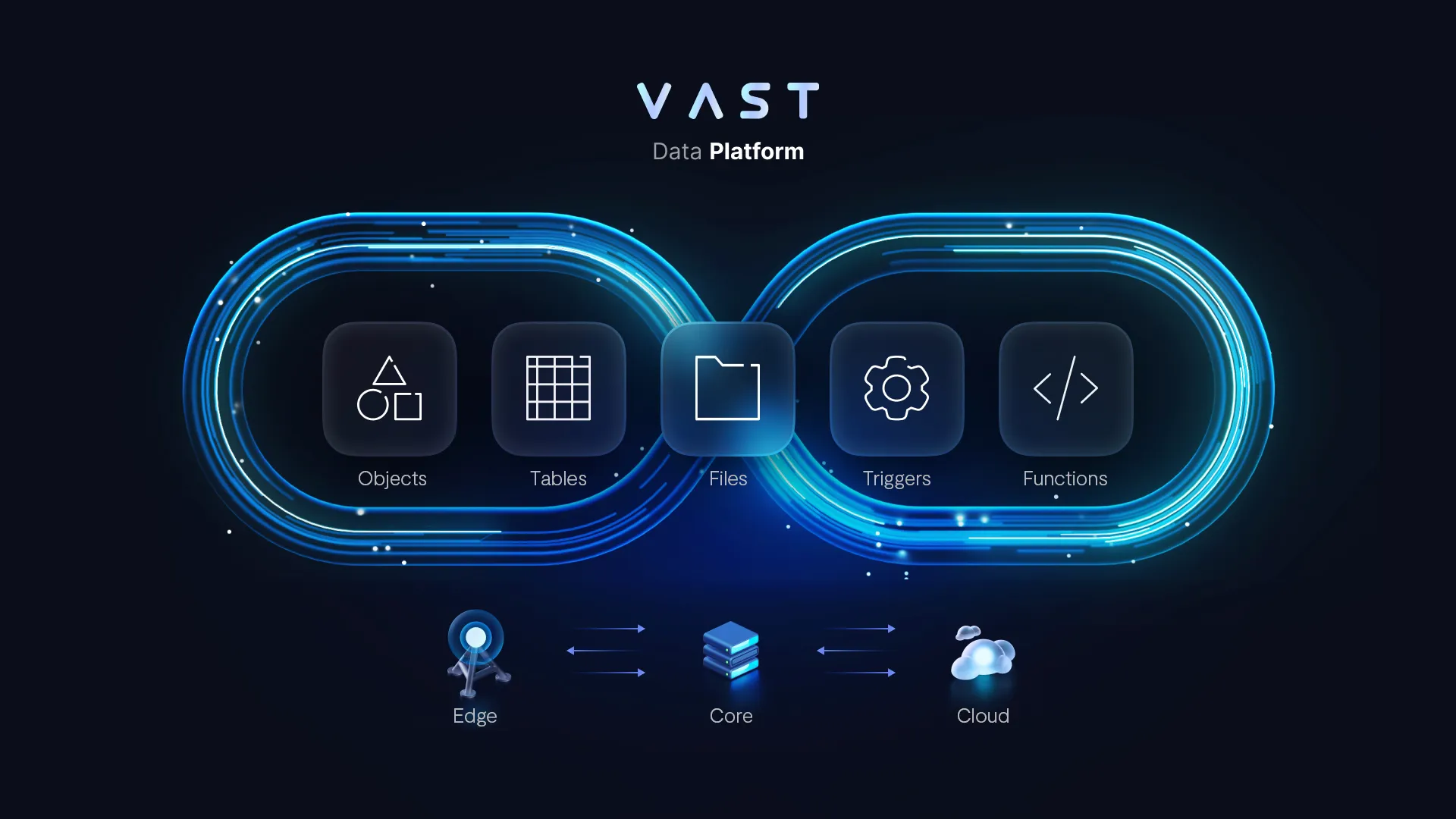It’s Big Data conference season! VAST is heading to Big Data London and Big Data Paris, and we are pumped up! I may be brand new to VAST Data, but I am thrilled to be joining the team at these events. (And no, not just because it’s also Fashion Week in Paris.) These conferences are where big ideas about big data are launched, discussed, and gain traction - a place for the biggest data nerds to get together and figure out where technology can take us. And nobody is setting the data world up for the future like VAST Data.
What is VAST Data?
Isn’t VAST a storage company? Sure, but we’re so much more and we’re ready to tell the world what we’ve been up to. The data world over the past 20 years or more has been focused broadly on storage and compute. Data is growing – requiring more and better storage. The hunger for serious value from data is growing – requiring more and better compute. VAST began by revolutionizing the core principles of data storage. Instead of adhering to outdated infrastructure paradigms, we’ve innovatively transformed them, introducing the Disaggregated Shared Everything (DASE) architecture. This allows for unparalleled storage capabilities, combining rapid performance with boundless scalability. VAST has established itself as a premier player in the storage space, and continues to innovate and improve, allowing scale and access that can grow with the data and never sacrifice performance.
The VAST Data Platform
This year at our Build Beyond event, VAST unveiled the next step in our evolution: the VAST Data Platform. Simply put, we’ve conquered the most fundamental layers of the data stack with our VAST DataStore - the ultimate storage and data access technology that lets you access all of your structured and unstructured data without the headaches of multiple storage tiers based on complex access patterns.
The VAST DataBase works seamlessly with the DataStore to provide the transactional performance of a database, with the query performance of an exabyte-scalable data warehouse at the cost of a data lake. This means you’re getting a database that works seamlessly to access all of your data at once across your entire Universal Storage layer.
Finally, the VAST DataEngine (launching in 2024) is our compute layer that is optimized for the VAST DataStore and DataBase. By engineering data processing and event notifications natively into the system, we aim to break the tradeoff between data streaming and global insight. The DataEngine will support new types of data - functions and triggers – and the VAST Data Platform will make data dynamic by adding support for procedural functions in the same way that JavaScript made websites dynamically interactive. In other words, the DataEngine is the basis for perpetual AI training and inference and we hope will be the basis for the AI-powered discoveries of the future.

VAST Data Platform: Data at the Scale of AI
The focus in the data industry these past few years has been on the modern data stack. However, this isn’t really modern - it’s simply a cloud- and SaaS-based version of the same old data stack we’ve had since the 1980’s: lots of data replication, painstaking curation, and with the goal of reporting and BI. This data stack isn’t built for the future, and it’s certainly not built for deep learning. Unstructured data alone will break the paradigm, and the requirement of truly massive quantities of data for training and models will only increase.
With the VAST Data Platform, we are setting the stage for super fast access of all data - both structured and unstructured - at the scale of AI. Rather than relying on the legacy data stack built for a different time with different goals, we’re looking forward: to storage, curation, and activation of data with cutting edge technology that scales with your business. Simply put, the stack originally built for BI will not work for AI. By both simplifying the stack and making it scalable, with a focus on performance and accessibility, VAST lets you focus on the value of your data, rather than the underlying technologies. What’s more, VAST allows you to optimize for both performance and capacity, eschewing this historical tradeoff that has plagued traditional analytics stacks by taking advantage of the DASE architecture.
On a personal note, this is why I joined VAST - I have a mostly healthy obsession with getting data from the source to the business value in the most efficient way, questioning all of the old methodologies and imagining what the future holds. VAST is rethinking everything from storage on up: data models, compute, access patterns, you name it. Data ecosystems at the largest scales have the most complex challenges, yet those scales are where the most unique and valuable insights come to life. VAST is at the forefront of tying together the most advanced data technologies to simplify and perform at the exabyte scales and beyond.
Big Data London and Big Data Paris
VAST is a global organization with a strong European presence so we are excited to showcase our industry leadership at both Big Data London and Big Data Paris this year. With our solutions and focus on performance and accessing data at the largest scales and the conferences focusing on AI, VAST is a perfect fit.
We look forward to seeing you there – join us at our booth and pick up some swag and chat with the VASTronauts. You can also come listen to Andy speak at Big Data London or Bertrand speak at Big Data Paris about our solutions and accessing unstructured and semi-structured data for AI with the VAST Data Platform. We’ll have a great team of folks eager to help organizations understand how VAST can help them get where they’re going - stop by and say hello or reach out to learn more.



